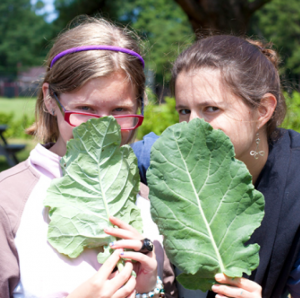Boys are significantly more likely than girls to be strong in assertiveness, according to data collected during the 2018-19 school year by Vermont Afterschool and The PEAR Institute: Partnerships in Education and Resilience (PEAR) as part of Vermont Afterschool’s Youth Resiliency Project. The project, which is made possible with funding by Northfield Savings Bank is focused on helping children and youth in Chittenden, Washington, and Orange counties build social emotional skills and resilience by supporting afterschool and out-of-school time programs and professionals.
The PEAR Institute uses scientific research to develop support systems and tools to help measure and build social-emotional resiliency in young people. Vermont Afterschool has partnered with PEAR over the past several years to administer their tools in various programs throughout the state. As part of the Youth Resiliency Project, we worked with PEAR to administer their Holistic Student Assessment (HSA). The HSA is a student-self report tool that highlights students’ social-emotional strengths and challenges. The results can be used to identify students who are struggling and/or in crisis so that program providers can help build a safety nets and build developmentally supportive environments. The tool measures student assets through three scales: resiliency (such as emotion control and empathy); relationships (with peers, with adults); and learning/school engagement (such as critical thinking and learning interest).
In 2018-19, Vermont Afterschool administered the HSA as well as the HSA Elementary (a slighter shorter version of the tool for younger students) to a total of 42 students in grades 3-5 from afterschool programs in Burlington, Tunbridge and Williamstown. The goal was to obtain a baseline understanding of social-emotional competencies among elementary students in afterschool programs. Vermont Afterschool obtained the results from PEAR and received training on interpreting the results. Over half of the students (54.8%) were identified as not being in crisis or struggling, from a social-emotional standpoint. The results also showed that 35.7% of students were struggling and 9.5% of students were in crisis. Student portraits were shared with the students’ afterschool program directors and site coordinators so that the struggling and in-crisis students could receive needed support.
We took a deeper look into the data with the objective of identifying any significant differences between demographic groups. Students reported on their gender identification (girl/boy), race/ethnicity, grade level, and primary language (English/not English). The dashboard’s presentation of average scale scores among the various groups of students hinted at some differences, particularly between boys (22 students) and girls (20 students). By using the data related to the number of students that had strengths and weaknesses in certain areas, we were able to test for any significant differences.
The most striking differences were between boys and girls on the assertiveness scale. Among girls who took the HSA, only one (5%) was found to have assertiveness as a strength while eight (40%) were found to have it as a challenge. In contrast, 11 boys that took that HSA (50%) were found to possess assertiveness as a strength while only three (14%) had it as a challenge. The difference between the number of girls versus boys who had assertiveness as a strength was found to be significant at the p=0.05 level of analysis. It was the only significant differences found between any of the groups for any of the scales as far as strengths or weaknesses among all of the HSA results.
In the context of the HSA, PEAR defines assertiveness as the “confidence in putting oneself forward, advancing personal beliefs, wishes or thoughts and in standing up for what one believes.” Simply put, assertiveness is extremely important for self-empowerment. At Vermont Afterschool, one of our primary focuses is Youth Voice – that is, helping empower youth to have their voices heard and represent themselves in society. We want them to be able to express their needs, explore their interests, and connect with each other ways that honor their true and developing selves. The ability to communicate with assertiveness as opposed to aggression or passivity is a critical skill for young people to possess in order to accomplish these goals.
These results about gender differences in assertiveness inevitably lead to more questions and thoughts about gender expectations, norms, and biases with regard to assertiveness. A quick Google search reveals, unsurprisingly, that much has already been written about this complex issue. But what does it mean for Vermont’s children and youth? How can we use this information to help ensure that girls are equally equipped for self-empowerment? First and foremost, awareness is key. The more that afterschool and out-of-school time professionals are aware how profound this difference is, the more that they can work to implement strategies to help girls feel comfortable assert themselves. Professional development strategies should be developed around this issue. Parents need to be in on the action, too. Roots of Action has a great article for parents about raising assertive and confident girls complete with strategies for encouraging assertiveness in young girls – from having family debates to simple practice tips such as having girls practice ordering for themselves at restaurants.
In conclusion, the results from PEAR’s Holistic Student Assessment that was used in three elementary schools in 2018-19 revealed that the majority of kids in afterschool programs are doing fine from a social-emotional standpoint, but many students need additional support. Among groups of students the biggest difference was between girls and boys on the assertiveness scale. We need to support them as well as program providers and the young people themselves to help close this gap.
Any opinions, findings, and conclusions or recommendations expressed in this material are those of Vermont Afterschool and do not necessarily reflect those of The PEAR Institute, Harvard Medical School, or McLean Hospital.

